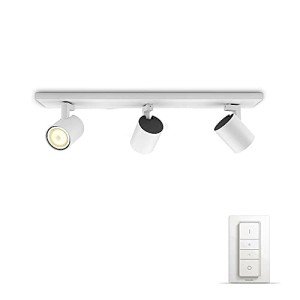10 Things We All Love About Interior Lighting UK
Interior Lighting in the UK: A Comprehensive Guide
Interior lighting plays a vital role in producing an environment, boosting functionality, and revealing personal style within homes and organizations. In the UK, where the weather can be unforeseeable, effective lighting is not only about aesthetic appeals however also about making spaces feel warm, inviting, and useful. This article looks into numerous elements of interior lighting, including types, patterns, suggestions, and often asked questions.
Understanding the Importance of Interior Lighting
Lighting is frequently considered the backbone of interior decoration. It influences mood, performance, and the viewed size of areas. The best lighting can:
- Enhance the architectural functions of a room.
- Highlight art work and decoration.
- Improve security and security.
- Influence efficiency in work areas.
- Develop a comfy ambiance for relaxation.
Types of Interior Lighting
Reliable lighting style typically integrates three primary types of lighting: ambient, task, and accent.
1. Ambient Lighting
This is the primary source of light in a room, offering overall illumination. Common sources include:
- Ceiling-mounted fixtures
- Chandeliers
- Recessed lighting
- Soft wall sconces
Ambient lighting creates a foundation from which other lighting types can construct upon.
2. Job Lighting
Task lighting focuses on particular locations to assist in activities such as reading, cooking, or working. This kind of lighting assists to reduce eye stress and can dramatically impact functionality. Common sources consist of:
- Desk lamps
- Under-cabinet lights in kitchen areas
- Reading lamps beside beds
- Track lighting focused on work surfaces
3. Accent Lighting
Accent lighting adds drama and highlights specific items or locations, such as artwork or architectural features. This type of lighting can develop visual interest and depth in an area. Sources include:
- Picture lights
- Decorative lamps
- Uplighters
- LED strip lights along racks
Making use of a combination of these lighting types can result in a well-balanced and multifunctional area.
Popular Lighting Trends in the UK
The interior lighting landscape in the UK continues to evolve, affected by style trends, technology, and consumer choices. Here are some popular trends to see:
Smart Lighting: The introduction of smart innovation has actually changed how people handle lighting in their homes. Smart bulbs and systems like Philips Hue enable users to manage brightness and color temperature level by means of their smartphones.
Minimalist Designs: Sleek, basic styles that mix seamlessly with interiors are dominating the market. Pendant lights with delicate frames, LED strips, and geometric shapes are particularly stylish.
Industrial Lighting: This trend showcases raw, disclosed materials. Metal fixtures and Edison bulbs offer a vintage touch that is both trendy and functional.
Eco-Friendly Options: With increasing awareness of sustainability, lots of customers are turning to energy-efficient LED alternatives and fixtures made from sustainable materials.
Tips for Effective Interior Lighting Design
Creating an efficient lighting strategy needs thoughtful factor to consider of numerous factors. Here are some tips:
Consider the Purpose of Each Room: Every space has a various function. Consider what activities will happen and what kind of lighting will support those activities.
Layer Lighting: Employ multiple types of lighting within a room to produce depth and versatility. Integrate ambient, task, and accent lighting to enhance both visual appeals and functionality.
Use Dimmers: Dimmers enable control over brightness levels, allowing users to change lighting according to mood and time of day.
Incorporate Natural Light: Make the many of natural source of lights like windows. Use light, reflective colors for walls and furnishings to make the most of brightness.
Believe About Color Temperature: Different color temperature levels (measured in Kelvins) develop various atmospheres. Warmer temperatures (around 2700K-3000K) are relaxing, while cooler temperatures (4000K+) lend a more medical or energetic feel.
Interior Lighting Mistakes to Avoid
To develop a well-lit area, it's vital to avoid typical lighting risks. Here are some errors to see for:
Underestimating Wattage: Insufficient wattage can lead to dim, unwelcoming spaces.
Ignoring Scale: Fixtures that are too small for a room can keep an eye out of location, while oversized fixtures can overwhelm a space.
Over-reliance on Ceiling Lights: Relying entirely on overhead lighting can produce uninviting shadows; balance with extra lighting types.
Poor Placement: Misplaced lights can produce areas that are too brilliant or too dark. Plan positionings attentively.
Frequently asked question Section
1. What is the difference in between warm white and cool white light?
Warm white light (2700K to 3000K) develops a cozy, welcoming atmosphere, ideal for living rooms and bed rooms, while cool white light (4000K to 5000K) is more fit for workspaces as it improves concentration and clarity.
2. How can I take full advantage of natural light in my home?
To make the most of natural light, usage light-colored walls, tactically location mirrors to show light, and choose sheer window coverings that permit sunlight to pass through.
3. How do I pick the best light fixtures?
Think about the size of your space, the style of your decoration, and the function of the area. Guarantee the scale of fixtures matches the room and matches the overall visual.
4. Are LED lights much better than traditional bulbs?
Yes, LED lights are more energy-efficient, have a longer life-span, and can offer a series of color temperature levels, making them a more sustainable lighting option.
5. What should I do if specific locations of my room remain too dark?
Think about including extra task or accent lighting to brighten those locations. Buy Track Lighting UK , wall sconces, or perhaps tactically put table lamps can help alleviate dark spots.
Interior lighting is a necessary aspect of home and business style across the UK. Comprehending the various types, current trends, and finest practices can help homeowner in creating spaces that are not only trendy but also practical. With thoughtful factor to consider and planning, effective lighting can transform any environment, boosting both ambiance and usability for many years to come.
